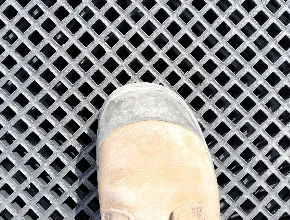loading...
- No. 9, Xingyuan South Street, Dongwaihuan Road, Zaoqiang County, Hengshui, Hebei, China
- admin@zjcomposites.com
- +86 15097380338
- Welcome to visit our website!
Design and Applications of CHS Hollow Sections in Structural Engineering
Understanding CHS (Circular Hollow Sections) in Structural Engineering
Circular Hollow Sections (CHS) are a popular choice in structural engineering, especially in the design and construction of steel structures. Their unique geometric properties enable them to offer significant advantages over traditional solid sections and other hollow sections. This article delves into the characteristics, benefits, and applications of CHS in modern construction.
What are Circular Hollow Sections?
CHS are structural members with a circular cross-section, typically made from steel. They come in various sizes and wall thicknesses, making them versatile for different applications. CHS can be produced in both hot-rolled and cold-formed varieties, which allows for flexibility in manufacturing processes. This circular shape gives them distinct mechanical properties, providing strength and stability while also reducing the weight of the structure.
Key Advantages of CHS
1. Strength and Rigidity One of the most significant advantages of CHS is their high strength-to-weight ratio. The circular shape allows for uniform distribution of stress across the entire section, which makes them exceptionally efficient under axial loads, bending, and torsion.
2. Aesthetic Appeal From an architectural standpoint, CHS offers a sleek and modern look. Its smooth surface and uniform shape allow for creative designs while maintaining structural integrity. This aesthetic quality makes CHS a favorite in contemporary architectural projects.
3. Ease of Fabrication CHS can be easily cut, welded, and connected to other structural components. The uniformity in shape simplifies the fabrication process, reducing time and labor costs on-site. This ease of assembly contributes to overall efficiency in construction projects.
chs hollow section

4. Resilience to Environmental Factors Steel CHS can be treated with various protective coatings, enhancing their resistance to corrosion and environmental degradation. This durability makes them suitable for outdoor structural applications in varying climates.
5. Reduced Material Usage Because of their high strength, CHS allows for less material to be used in construction compared to solid beams or other sections. This not only minimizes costs but also contributes to more sustainable construction practices by reducing the overall carbon footprint.
Applications of Circular Hollow Sections
CHS are used extensively in various structural applications, including
- Columns and Beams Their strength and stability make CHS an ideal choice for columns and beams in buildings and bridges. - Trusses In truss structures, the lightweight and high strength of CHS facilitate efficient load distribution, making them suitable for roofing systems and supporting frameworks. - Bracing Systems CHS is commonly used in bracing systems to provide lateral support, enhancing the stability of buildings, especially in seismic zones. - Automotive and Marine Applications Due to their lightweight and strength, CHS is also utilized in vehicle frames and marine structures, where weight savings are crucial.
Conclusion
In summary, Circular Hollow Sections are an integral component of modern structural engineering. With their combination of strength, weight efficiency, aesthetic appeal, and versatility, CHS has reshaped how engineers and architects approach design and construction. As the industry continues to evolve towards more sustainable practices, the use of CHS is likely to increase, supporting the trend of reducing material waste and enhancing structural performance. Whether in high-rise buildings, bridges, or innovative architectural designs, CHS is poised to play a vital role in the future of construction.
-
Premium FRP Handrail for All ApplicationsNewsAug.29,2025
-
Low Maintenance FRP Mini Mesh Grating ProductsNewsAug.29,2025
-
Innovative FRP Square Tubes for Modern Industrial SolutionsNewsAug.29,2025
-
FRP Water Storage Tanks Wholesale Solutions for Bulk BuyersNewsAug.29,2025
-
FRP Molded Grating Solutions for Diverse Industrial ApplicationsNewsAug.29,2025
-
Construction Advancements Through FRP Pultruded ProfilesNewsAug.29,2025
-
Why Choose FRP Railings, Guardrails, and Handrail Systems?NewsAug.29,2025
